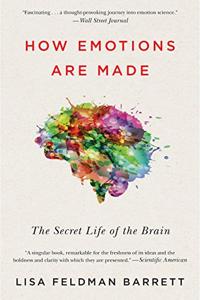
Want to learn the ideas in How Emotions Are Made better than ever? Read the world’s #1 book summary of How Emotions Are Made by Lisa Barrett here.
Read a brief 1-Page Summary or watch video summaries curated by our expert team. Note: this book guide is not affiliated with or endorsed by the publisher or author, and we always encourage you to purchase and read the full book.
Video Summaries of How Emotions Are Made
We’ve scoured the Internet for the very best videos on How Emotions Are Made, from high-quality videos summaries to interviews or commentary by Lisa Barrett.
1-Page Summary of How Emotions Are Made
Introduction
Historic thinkers believed that emotions were innate and automatic. However, they also thought we had to use our reasoning abilities to control those feelings. Lisa Feldman Barrett’s theory is called the classical view of emotion.
Scientists have found that emotions are not only a result of what we experience, but also how our brain processes those experiences. This means that the way we understand and process an event is as important as the actual event itself.
The Search for Emotion’s ‘Fingerprints’
In the 1960s, a group of psychologists led by Silvan S. Tomkins created a set of photographs that depicted basic emotions such as fear, happiness, and surprise. They used their photographs to test emotion recognition around the world. Even members of an isolated tribe in Papua New Guinea were able to correctly identify emotions using this method.
However, experiments have shown that facial expressions are not as simple and fixed as once thought. Studies measuring the movement of muscles in faces show that there is no one pattern for a single expression; rather, they vary greatly. In addition, the same expression can be interpreted differently depending on its context within a photo or scenario.
There have been many studies that measure brain activity and nervous system responses to determine what emotions people are experiencing. However, the results of these studies vary greatly from person to person. The human body does not display a single emotion, but rather it displays a variety of different emotions that depend on each individual’s personality and situation.
Emotions Are Constructed
Taste is not an objective experience. It’s mediated by concepts and expectations in the brain. If you’re served a pink creamy substance and are told that it’s ice cream, you will probably enjoy it if it tastes like fish. However, if you’re told that it’s salmon mousse, then you’ll probably enjoy eating it even more than before because of how good salmon mousse tastes. The same goes for other senses as well such as smell or touch – food or objects may be disgusting depending on your perception of them (i.e., what they look like).
Studies show that your brain can interpret internal sensations in different ways, depending on the context. For example, if you get an adrenaline rush from doing something scary, like bungee jumping or skydiving, then it will feel like anger to you. In another situation, however, getting an adrenaline rush could make you feel joyful and excited.
A feeling is an interpretation of something. It’s a meaning that we apply to a certain situation or experience. A feeling is based on many factors, such as physiological cues, personal experiences and social interactions.
The Myth of Universal Emotions
The results of the basic emotion method studies have been called into question. This is because they were conducted by asking people to pick from a list of six emotions, like happiness and sadness. However, when the researchers removed that list and asked people what emotions they felt instead, response accuracy plummeted.
Studies among the Himba tribe of Namibia showed that they grouped photos based on concepts of action, not emotion. Other studies show that specific emotions are recognized in a face only if the person has already linked those emotions to facial expressions. For example, Romans didn’t smile to show happiness because there is no word for “smile” in Latin; therefore, they would be unlikely to recognize happiness in a smiling face.
The Origin of Feeling
If you feel relaxed, tired, or curious, this could be a pleasant experience. However, these are not emotions because they’re generated by the brain’s internal monitoring process called interoception.





